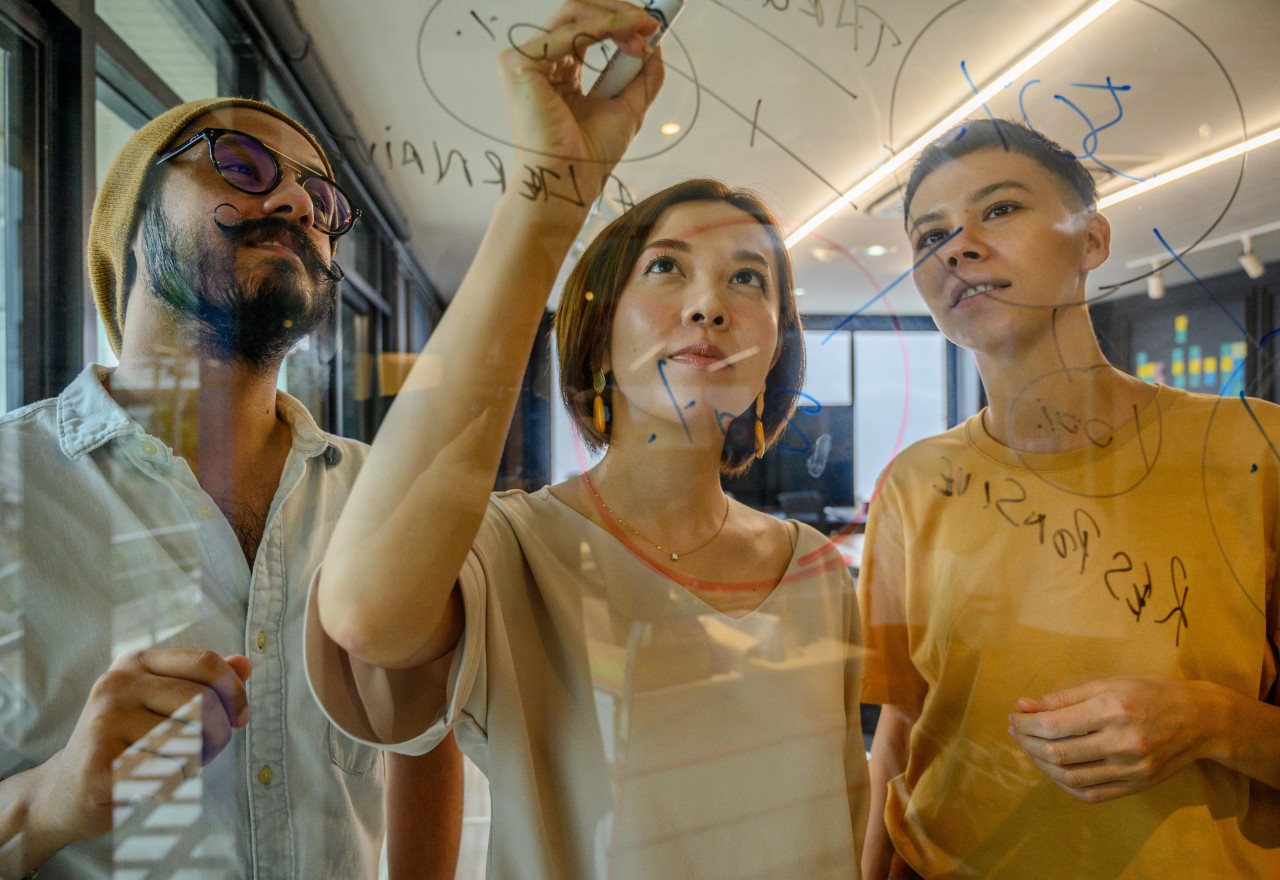Innovation-Hub: Visualisation
DTLab Challenge with the German Red Cross

Overview
For over 150 years, the German Red Cross has seen it as its task to provide comprehensive assistance to people in conflict situations, disasters, and health or social emergencies. This is what the more than 177,000 employees and 435,000 volunteers stand for in the most diverse areas of work, such as rescue and health services, disaster relief or social care providers.
Problem
As a modern, future-oriented aid organisation, the German Red Cross is continuously working on digital and analog offerings to be able to provide assistance even faster, in a more targeted and humane manner. Employees and volunteers alike contribute new, diverse and innovative ideas every day to make the work in the 19 state associations, almost 500 district associations, 31 sisterhoods and more than 4,500 local associations more modern. Due to the size of the association, it is particularly important to bring together contact persons from a wide variety of association members. The idea was to create an attractive platform for members to visualise innovation ideas and projects, to provide attention, reach and opportunities for participation, and to network interested and committed parties in a targeted manner. With this in mind, the DRK turned to the Digital Transformation Lab.
Approach
In the summer semester of 2021, a group of students from the Marketing Management master's degree program at the Faculty of Business Administration dedicated themselves to the project "Innovation Hub for the DRK" and developed proposed solutions for a Germany-wide networking platform for innovations and innovators. The group of students was divided into four teams, each of which addressed one of the four aspects of participation, networking, visualisation and implementation during the challenge. Dr. Beate Rottkemper and Bettina Stuffer from the DRK accompanied the project and were in intensive exchange with the student teams. Susanne Bruch, officer for "Social Innovations and Digitalisation" and deputy head of the team for "Social Trends and Innovations" at the DRK General Secretariat, commented on the objective as follows: "The Innovation Hub gives our member associations the opportunity to present themselves with their innovative projects. In addition, it offers us the chance to show that we as a welfare association work in an innovative and future-oriented way." The project was organised by the DTLab as an Innovation Challenge and actively supported by Amazon Web Services (AWS). For example, AWS helped students target their ideas with its "Working Backwards" innovation methodology and gave them many tips on technical implementation. In addition, AWS contributed to a successful and timely project by providing state-of-the-art cloud technologies. Lars Schmitz from AWS, who as Digital Innovation Lead has already accompanied various Innovation Challenges at different faculties of HM, sums up: "I am impressed by the results. The students managed to get to grips with a complex problem in just three months, develop a joint product vision in four teams, implement it prototypically, and make recommendations to the DRC for the next steps. The satisfaction of the DRC speaks for itself!".
Ideas of the "Visualisation" team
The students who addressed the visualisation aspect suggested access via a website or app that visually represents all of DRK's innovation projects. The design should correspond to that of a feed, as it is already familiar from social media networks, and channels should be labelled with hashtags according to their core topics. An integrated search and filter function as well as likes and comments would make it easier to find and communicate with other association members.
As soon as new projects appear on the platform, members should be able to be notified using push notifications via app and email. The channels are to be able to be divided into two major topic areas, on the one hand business-related topics, which include surveys and analyses or relate to digitalisation, for example, and on the other hand topics on innovative technologies, such as virtual reality or artificial intelligence. Different roles should then be assigned on the platform, e.g., external user without registration, registered user and backend admin, who are entitled to different functions.
Prototype
As a prototype, the students presented a possible feed design with contact page and project input mask from the internal and external view.
Next steps
The all-round successful project made everyone look forward to more innovative collaborations to be implemented in the future.
Faculty: 10 - Business Administration
Lecturer: Prof. Dr. Claudia Eckstaller
Challenge provider: GRC - German Red Cross
Date: Summer Semester 2021
Supporting documents
Further documents can be found here.